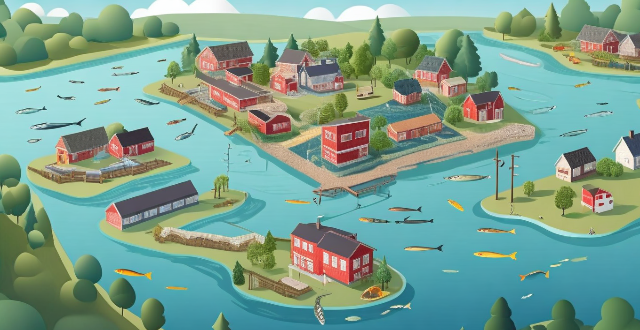The fishing industry is facing challenges due to climate change impacts on fish populations and migration patterns. To adapt, the industry should embrace sustainable practices, enhance ecosystem resilience, adapt to changes in fish populations, build long-term resilience, and develop community support. This includes reducing bycatch, supporting stock assessment and management, protecting marine habitats, maintaining genetic diversity, adjusting fishing grounds, diversifying target species, investing in technology, educating and training personnel, engaging in policy advocacy, promoting consumer awareness, and collaborating with local communities. Stakeholders must work together to ensure the sustainability and prosperity of the fishing industry amidst a changing climate.

Adapting to Climate Change: Strategies for the Fishing Industry
The fishing industry, like many other sectors, is facing significant challenges due to the effects of climate change. Rising temperatures, altered ocean currents, and changing weather patterns are just some of the factors that can impact fish populations and migration patterns. To adapt, the industry must implement a variety of measures to ensure sustainability and resilience. Here's how they can do so:
Embrace Sustainable Practices
Reduce Bycatch and Discards
- Improve Selectivity: Use more selective fishing gear to reduce the amount of unintended catch.
- Monitor and Report: Implement onboard monitoring systems to record bycatch and discards accurately.
Support Stock Assessment and Management
- Data Collection: Contribute to scientific research by providing data on catches and species distribution.
- Collaborate with Managers: Work closely with fishery managers to develop and adhere to sustainable quotas.
Enhance Ecosystem Resilience
Protect Marine Habitats
- Avoid Sensitive Areas: Steer clear of critical habitats such as coral reefs and seagrass beds during fishing activities.
- Promote Restoration: Support or undertake initiatives to restore damaged marine ecosystems.
Maintain Genetic Diversity
- Preserve Diverse Stocks: Avoid overfishing certain stocks to maintain genetic diversity within fish populations.
- Breeding Programs: Participate in or support fish breeding programs that promote healthy genetic variation.
Adapt to Changes in Fish Populations
Flexible Fishing Practices
- Adjust Fishing Grounds: Shift fishing grounds in response to changes in fish distribution.
- Diversify Target Species: Adapt to fluctuations in population by diversifying the range of species targeted.
Invest in Technology
- Improve Monitoring: Utilize advanced technology for better real-time monitoring of fish populations.
- Enhance Forecasting: Invest in tools and research to predict shifts in fish populations and migration patterns.
Build Long-term Resilience
Educate and Train Personnel
- Sustainability Training: Train crew members on sustainable fishing practices and the importance of conservation.
- Adaptability Skills: Encourage continuous learning to adapt to new fishing techniques and technologies.
Engage in Policy Advocacy
- Promote Climate-aware Policies: Advocate for policies that consider the impacts of climate change on fisheries.
- Support International Agreements: Participate in or support international agreements aimed at managing global fisheries sustainably.
Develop Community Support
Consumer Awareness
- Educate Consumers: Inform consumers about the impacts of climate change on seafood and the benefits of sustainable choices.
- Labeling Initiatives: Support accurate and informative labeling of seafood products regarding their origin and sustainability.
Local Collaboration
- Community Partnerships: Work with local communities to promote sustainable fishing and protect local ecosystems.
- Support Local Economies: Engage in activities that support local economies dependent on fisheries.
In conclusion, the fishing industry must adopt a multifaceted approach to confront the challenges presented by a changing climate. Through sustainable practices, ecosystem protection, adaptable fishing strategies, long-term resilience building, and community support, the industry can navigate these challenges effectively. It's crucial for stakeholders to work together—from fishermen to policymakers, scientists to consumers—to ensure the health and prosperity of the fishing industry amidst a changing climate.